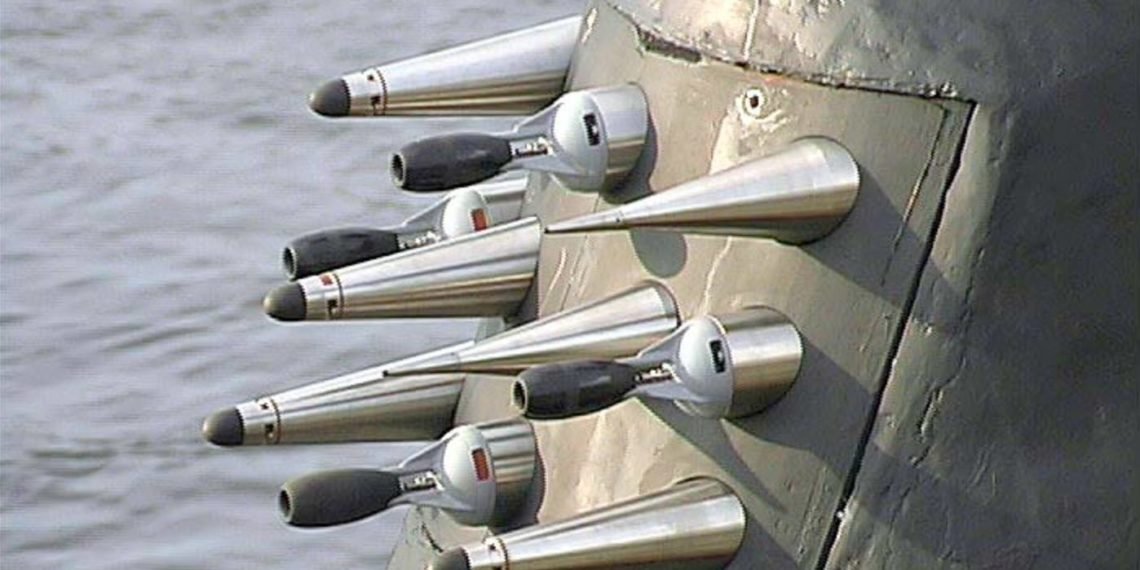Unveiled: Soviet/Russia’s “Out of the Box” Solution for Tracking US Submarines Undetected
The unique "System Obnarujenia Kilvateranovo Sleda" or SOKS system was an out-of-the-box solution by the Soviet Union/Russia in their efforts to track American nuclear submarines without the need to rely on sonar systems, be it passive or active.
(DEFENCE SECURITY ASIA) — In the late 1980s, the Soviet Union claimed to have successfully tracked an American nuclear submarine, the USS Simon Bolivar.
This was considered a significant achievement because Western military analysts had long believed that the possibility of their submarines, especially those of the United States, being detected by their main adversary, the Soviet Union, was extremely slim.
The Soviet Union’s success in tracking the American submarine was achieved by one of their own submarines known as the K-147, belonging to the “Victor” class.
At the time, the United States believed that its nuclear submarines were challenging to be detected by the Soviet Union, assuming that the sonar technology used by the Communist nation was technologically outdated.
However, a secret CIA report from 1972, only disclosed in 2017, revealed that the Soviet Union had an unconventional way to track American nuclear submarines without using sonar technology.

The non-sonar technology developed by the Soviet Union to track American nuclear submarines was called the “System Obnarujenia Kilvateranovo Sleda,” or SOKS.
The K-147 Soviet submarine from the Victor class was said to have been equipped with the SOKS system since 1969.
Despite being aware of the existence of SOKS, the United States and its allies still did not have in-depth knowledge of the system and its capabilities, leading them to underestimate Moscow’s ability to track their submarines.
Furthermore, the Soviet Union kept the SOKS system highly classified.
The SOKS system was installed on Russian submarines, and from the outside, it appeared as sharp spikes or protrusions attached to the submarine’s hull.

This unique system was an “out-of-the-box” solution by the Soviet Union in their efforts to detect American nuclear submarines without relying on sonar, whether passive or active.
In the secret CIA report, one of the SOKS instruments for tracking enemy submarines was called “activation radionuclides,” which had the ability to detect weak radiation produced by the nuclear reactor of the submarine.
Another SOKS instrument was the “gamma ray spectrometer,” which functioned to detect radioactive traces in seawater.
The Soviet Union initially tested the SOKS system on their own nuclear submarines to ensure its effectiveness before deploying it for tracking enemy submarines.
The American secret report also revealed how moving nuclear submarines left a unique chemical trace in the wake they generated.

Among the chemicals produced when a nuclear submarine moved were zinc from the submarine’s anti-corrosion materials.
With SOKS instruments, Russian submarines could detect nickel particles produced by the seawater used to cool the nuclear reactor of the submarine.
The nuclear reactor of the submarine required thousands of gallons of cold water for cooling.
SOKS could also detect hydrogen produced by the submarine’s oxygen system, even when it had dissolved into seawater.

Although these chemicals were present in very small amounts, the advanced and unique SOKS system was capable of detecting their presence.
This is what the Soviet Union and Russia did to track the presence of American nuclear submarines worldwide.
It was an unexpected “out-of-the-box” solution by the Soviet Union and Russia, which caught the United States by surprise. — DSA
To contact email: lulwabyadah@gmail.com


Comments are closed.